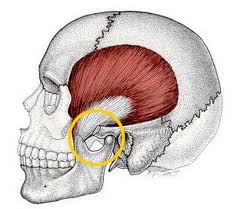Chiropractic Care for TMJ Disorder
What Is the Temporomandibular Joint?
 The TMJ, or temporomandibular joint, is located between the temporal bone and mandible and is adjacent to the ear canal. This hinged joint is one of the most active in the body. It is used when patients chew, talk, yawn, and any other time a person opens and closes the mouth. Because of the frequency with which the TMJ joint is used, along with the complexity of the supporting muscles, blood vessels, and nerves that control it, problems with the TMJ are all too common. At the Temecula chiropractic practice of Nathen Horst, we have a history of successfully treating patients who suffer from the painful effects of TMJ disorder.
The TMJ, or temporomandibular joint, is located between the temporal bone and mandible and is adjacent to the ear canal. This hinged joint is one of the most active in the body. It is used when patients chew, talk, yawn, and any other time a person opens and closes the mouth. Because of the frequency with which the TMJ joint is used, along with the complexity of the supporting muscles, blood vessels, and nerves that control it, problems with the TMJ are all too common. At the Temecula chiropractic practice of Nathen Horst, we have a history of successfully treating patients who suffer from the painful effects of TMJ disorder.
TMJ Disorder Symptoms
The symptoms of TMJ disorder include:
- Pain in the TMJ area, around the ears, face, neck, and/or shoulders; can occur on either or both sides of the face
- Increased pain when opening and closing the mouth
- Difficulty opening the mouth, especially when eating or yawning
- The jaw feels like it gets stuck when opening and closing the mouth
- A clicking or popping sound when opening and closing the mouth
- Misalignment of the bite
- Facial swelling
- Chronic headaches or neck pain
- Dizzy feeling
- Tooth pain
- Earaches
- Hearing problems
- Ringing sound in the ears
TMJ Disorder Causes
TMJ disorder is most prevalent in women and those between the ages of 20 and 40. The causes of TMJ disorder include:
- Injury to the head, neck, jaw, or TMJ, including whiplash or forceful impact
- Bruxism, or continual teeth grinding; many patients are unaware that they grind their teeth while they sleep at night, putting intense stress on the TMJ
- Stress or anxiety, conditions that can cause patients to clench the jaw, tighten the muscles that support the TMJ, and grind the teeth
- Arthritis in the TMJ
- Dislocation of the TMJ
Traditional Medical and Dental Treatment of TMJ Disorder
Although TMJ disorder is a common condition, doctors and dentists often fail to diagnose it, misdiagnose it, or do not properly treat the problems that cause it. Traditional doctors often choose to treat TMJ disorder with medications such as pain relievers, muscle relaxers, corticosteroids, or BOTOX® Cosmetic; this approach merely masks the symptoms caused by TMJ disorder. Dentists tend to treat TMJ disorder with orthodontic treatment to align the bite or the use of an oral splint (a mouth guard that is worn at night); these treatments aim to keep the joint in its ideal resting position, but still may not address other problems affecting the TMJ joint.
Chiropractic Treatment of TMJ Disorder
With chiropractic care, chiropractors seek to address the underlying problems that impair TMJ function. With a chiropractic alignment to treat TMJ, chiropractors can relieve the stress and tension that are adversely affecting the position and function of the jaw. Aligning the spine, treating spinal subluxations, and restoring optimal nerve supply to the joint can significantly reduce the symptoms associated with TMJ disorder. Gentle manipulations to the TMJ joint itself can also reduce pressure and improve blood flow to the area.
Contact Horst Chiropractic in Temecula to schedule an appointment for treatment of TMJ disorder.


